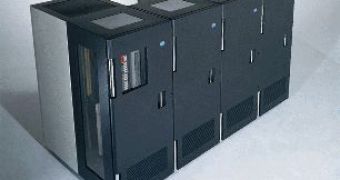As data centers grow and their energy bills are almost reaching the market value of the hardware and software platforms that are housed within, a number of companies are trying to reduce their expenses and adopt new technologies that will make them more eco-friendly. According to the site Earth2Tech. "Data center electricity use tops $2.7 billion annually in the U.S., and $7.3 billion worldwide, and the costs are only rising". "If you were to implement all the data center efficiencies that could be reasonably achieved by 2015, (it would save the) equivalent of the annual electricity consumption of 1.8 million homes".
The big names in the computer hardware industry are seizing the opportunity to enter a new market and to increase their energy efficiency at the same time, as the current trend that asks for processors to use less power is not the answer to all the companies' problems. "There are other costs, like for cooling, which are escalating out of control. Network devices also stay in a state of constant alert, consuming power all the time, so meters, sensors, and virtualization technology could make it possible to measure where power is being inefficiently used and better manage power-hogging technology".
Because of the constant advances in hardware and software technology, the big mainframe, with the power of a few hundred x86 compatible servers is under the spotlight again. "Yes, mainframes. Big Iron. Those big ol' data-crunching behemoths regarded by some as the dinosaurs of the datacenter. Pundits have periodically predicted they'll go extinct -- or at least pondered aloud how long they'd be around". Well, it looks like the IBM managed to reuse the old concept of mainframe and to implement it in a highly energy and cost efficient manner.
"The cost of energy, power to run computers, storage, and networking equipment, as well as the power to the cooling equipment, is becoming the highest single cost of managing a datacenter," says David Gelardi, VP of industry solutions at IBM, who was cited by the news site InfoWorld. "IBM took a look at these very interesting plums coming to the forefront at the same time. We have an opportunity with systems management tools, with Linux, and with virtualization, to be able to take the workloads that are principally running on much smaller, underutilized Unix servers and move them over to those 30 very large mainframes."
IBM is not the only one that thinks mainframes are the future champions of green computing inside those huge data centers. Independent reports from Robert Frances Group (RFG for short) tell us that mainframes are more power efficient than traditional servers are and their computing power is increasing more rapidly. "Mainframe systems consume less power, both in absolute and relative terms [than standard servers]. Typically, mainframe power densities are less than half of those of current rack and blade distributed systems. When looking at like workloads, the amount of energy consumed falls precipitously, in some cases the costs associated for power needed for an application are reduced by a factor of 600."

 14 DAY TRIAL //
14 DAY TRIAL //